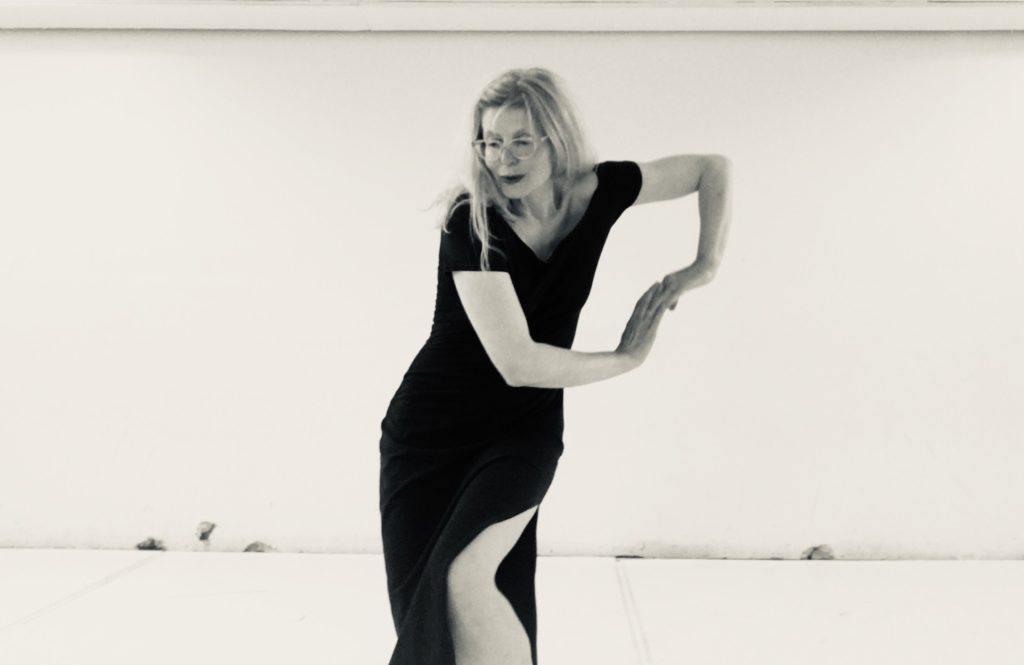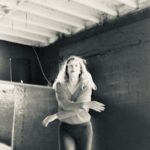Life Moves: Glasses, a dancer’s conundrum - Vancouver Ballet Society
- Home
- Life Moves
- Life Moves: Glasses, a dancer’s conundrum

By Rebecca Hope Terry
This can’t be happening, I said to myself as I searched, again, all the compartments of my dance-bag. I still couldn’t find my contact lenses for rehearsal.
I asked the choreographer if I could wear my glasses.
“No.”
For a myopic dancer, dancing without glasses can be a fascinating experience. An outward focus isn’t really possible without vision correction, and the intense internal focus can feel very grounding. That day, not being distracted by seeing was startlingly satisfying, some of the time. Trying to connect with others in the room, though, was disappointing. When the choreographer gave a note, I couldn’t tell if it was for me.
I pointed at my chest. “Me? Are you talking to me?” If she silently nodded yes, I wasn’t aware, as I couldn’t see what her blurry head was doing in the distance. I asked again (affirming aloud my inadequate vision): “Me? Are you talking to me?” Still not sure, so I asked yet again: “Me? Are you talking to me?” Finally, an audible response: “Yes, Hope, you.”
When we dancers and the choreographer sat in a circle sharing thoughts, I felt like I was on an island alone, surrounded by indistinguishable lumps of clay that talked. If anyone was trying to engage with me, I wouldn’t have known. Tired of straining my eyes, I gave up, but at random times smiled, just in case.
I have been fortunate to dance professionally for more than 30 years, from the west to east coast of Canada, to Europe, Morocco and Brazil, at over 100 theatres, in my contact lenses. And I’ve also worn glasses since I was six years old.
How giddy I was, after choosing my first pair. Since few children wore glasses, at first I felt special. That wore off quickly when I realized that wearing glasses was kind of a drag: they slid down my sweaty nose in summer and fogged up in winter. I was just a kid called “four eyes.”
In class photos, I wear the latest styles: the two-tone fade plastic frames of the 1960s, gold wire aviators of the 1970s and the big red rims of the 1980s. Masking tape often held the hinges on or, worse, kept the centre nose bridge together.
One day, after rehearsal, a fellow dancer donned a pair of large black rims.
“I didn’t know you wore glasses,” I smiled. Another dancer with glasses!
“They’re not real. I just wear them for fun.” Fun?
“Oh…” I nodded.
So some people wear glasses with no prescription, as a fashion accessory, like someone might wear earrings or a tie. Whereas for me, glasses are a necessary seeing aid.
Clarity exists within four inches of my eyes. Reading a book within this magic range without a seeing aid is an exhilarating Friday night activity. I can also see the pores on my lover’s skin and the crystal clear spokes of his blue irises.
With glasses on, some people might think I don’t look like a dancer. I wonder what a dancer looks like: Long hair? No hair? Thin? Curvy? Yes, all of those and more. I think that being a dancer is about expressing the choreographer’s vision through our physical skill, and our unique physicality holds an intrinsic message — our DNA or, more deeply, our spirit. I just want to see at the same time.

Could my seeing aid get jammed into my face during rehearsal? If I’m doing some complicated partnering, maybe in the exploratory phase, this might be an issue, but we are trained to be acutely aware of our partners – including the eyes and other vulnerable parts of the anatomy – which doesn’t change the fact that dancing is a risky business. I’ve sprained ligaments, torn muscles, ripped cartilage and pulled tendons. I’ve been dropped on my head and kicked in the head. I’ve had broken toes and stress fractures and surgeries to fix things. Compared to these occupational hazards, wearing a seeing aid is quite safe. And a simple elastic band keeps them firmly in place.
Some people question the aesthetics of a dancer performing in glasses, feeling they won’t look neutral, but like a librarian. Well, not every librarian wears glasses, and I question if “neutral” even exists. Whether it is cherry red lipstick or an arm tattoo, any adornment says something.
Stage lighting for dance is challenging even for dancers with good vision, since the floor seems to disappear when lit with sidelights. I have a severe astigmatism, causing the lights to morph into wagon wheels hurtling towards me, or dancing pineapples. The lack of a stable visual field throws me off balance, and can bring on the dreaded shakes.
When I taught dance to children, I remember one young girl who needed to wear glasses. Watching her polka across the room, I never thought her dancing any less.
Now, at 54, I have come full circle. I am again like the little girl needing to wear her glasses, as I cannot wear contacts anymore. They just hurt too much. In any of my future dance projects I would love to have the option of wearing my seeing aid for rehearsal and performance.
Will I look odd? Maybe to some. But perhaps it will seem less peculiar if we see more people dancing in their glasses. I’ll start.

